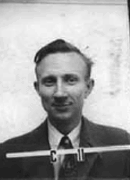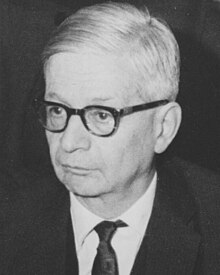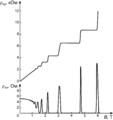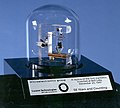Portal:Physics
| Physics Portal Main Page | Physics Textbook | Wikiprojects and things to do |
The Physics Portal
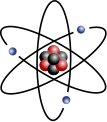

Physics is the scientific study of matter, its fundamental constituents, its motion and behavior through space and time, and the related entities of energy and force. Physics is one of the most fundamental scientific disciplines. A scientist who specializes in the field of physics is called a physicist.
Physics is one of the oldest academic disciplines. Over much of the past two millennia, physics, chemistry, biology, and certain branches of mathematics were a part of natural philosophy, but during the Scientific Revolution in the 17th century, these natural sciences branched into separate research endeavors. Physics intersects with many interdisciplinary areas of research, such as biophysics and quantum chemistry, and the boundaries of physics are not rigidly defined. New ideas in physics often explain the fundamental mechanisms studied by other sciences and suggest new avenues of research in these and other academic disciplines such as mathematics and philosophy.
Advances in physics often enable new technologies. For example, advances in the understanding of electromagnetism, solid-state physics, and nuclear physics led directly to the development of technologies that have transformed modern society, such as television, computers, domestic appliances, and nuclear weapons; advances in thermodynamics led to the development of industrialization; and advances in mechanics inspired the development of calculus. (Full article...)
The magnetosphere of Jupiter is the cavity created in the solar wind by Jupiter's magnetic field. Extending up to seven million kilometers in the Sun's direction and almost to the orbit of Saturn in the opposite direction, Jupiter's magnetosphere is the largest and most powerful of any planetary magnetosphere in the Solar System, and by volume the largest known continuous structure in the Solar System after the heliosphere. Wider and flatter than the Earth's magnetosphere, Jupiter's is stronger by an order of magnitude, while its magnetic moment is roughly 18,000 times larger. The existence of Jupiter's magnetic field was first inferred from observations of radio emissions at the end of the 1950s and was directly observed by the Pioneer 10 spacecraft in 1973.
Jupiter's internal magnetic field is generated by electrical currents in the planet's outer core, which is theorized to be composed of liquid metallic hydrogen. Volcanic eruptions on Jupiter's moon Io eject large amounts of sulfur dioxide gas into space, forming a large torus around the planet. Jupiter's magnetic field forces the torus to rotate with the same angular velocity and direction as the planet. The torus in turn loads the magnetic field with plasma, in the process stretching it into a pancake-like structure called a magnetodisk. In effect, Jupiter's magnetosphere is internally driven, shaped primarily by Io's plasma and its own rotation, rather than by the solar wind as at Earth's magnetosphere. Strong currents in the magnetosphere generate permanent aurorae around the planet's poles and intense variable radio emissions, which means that Jupiter can be thought of as a very weak radio pulsar. Jupiter's aurorae have been observed in almost all parts of the electromagnetic spectrum, including infrared, visible, ultraviolet and soft X-rays. (Full article...)
Did you know -

- ...that if you ever saw Jupiter's magnetic field from Earth, it would appear five times larger than the full moon?
- ...that the impact of a raindrop would be fatal if not for the property of fluid flow known as terminal velocity?
- ...that transits of Venus occur in a 243-year cycle?
Selected image -

Astrophysics is a science that employs the methods and principles of physics and chemistry in the study of astronomical objects and phenomena. As one of the founders of the discipline, James Keeler, said, astrophysics "seeks to ascertain the nature of the heavenly bodies, rather than their positions or motions in space–what they are, rather than where they are", which is studied in celestial mechanics. (Full article...)
Related portals
November anniversaries
- 1952 - detonation of the first Hydrogen bomb, code named "Ivy Mike".
- 1947 - invention of the first transistor, between November 17 to December 23. APS.
- 1930 - Patent granted for Einstein-Szilard refrigerator designed by Albert Einstein and Leó Szilárd. APS.
- 1919 - Elmer Imes's published work presented the first accurate measurement of the distance between atoms in molecules with high resolution infrared spectroscopy. APS.
- 1915 – Einstein's presentation to the Prussian Academy of Science specifies how the geometry of space and time is influenced by whatever matter is present. (see: General relativity and APS)
- 1895 - Wilhelm Conrad Roentgen discovers X-rays.
- 1887 - Michelson–Morley experiment provided strong evidence against the luminiferous ether. APS.
- 1872 - death of Mary Somerville who gained an international reputation as a scientist in the intervals of raising a family of six children. APS
- 1783 - John Michell predicted the existence of black holes, and the possibility of a luminous twin to aid in detection. APS
- 1676 – using his first quantitative measurement of the speed of light, Ole Rømer accurately predicts the delay of eclipse of Io
Births
- 1934 – Carl Sagan
- 1932 - Melvin Schwartz
- 1929 - Richard E. Taylor
- 1925 - Simon van der Meer
- 1902 - Eugene Wigner
- 1837 - Johannes Diderik van der Waals
- 1867 - Marie Curie (Nov. 7)
- 1828 - Balfour Stewart
- 1878 - Lise Meitner (Nov. 7)
- 1887 - Henry Moseley
- 1888 - C V Raman (Nov. 7)
- 1892 - Dmitri Skobeltsyn (Nov. 24)
General images
Categories

Fundamentals: Concepts in physics | Constants | Physical quantities | Units of measure | Mass | Length | Time | Space | Energy | Matter | Force | Gravity | Electricity | Magnetism | Waves
Basic physics: Mechanics | Electromagnetism | Statistical mechanics | Thermodynamics | Quantum mechanics | Theory of relativity | Optics | Acoustics
Specific fields: Acoustics | Astrophysics | Atomic physics | Molecular physics | Optical physics | Computational physics | Condensed matter physics | Nuclear physics | Particle physics | Plasma physics
Tools: Detectors | Interferometry | Measurement | Radiometry | Spectroscopy | Transducers
Background: Physicists | History of physics | Philosophy of physics | Physics education | Physics journals | Physics organizations
Other: Physics in fiction | Physics lists | Physics software | Physics stubs
Physics topics
Classical physics traditionally includes the fields of mechanics, optics, electricity, magnetism, acoustics and thermodynamics. The term Modern physics is normally used for fields which rely heavily on quantum theory, including quantum mechanics, atomic physics, nuclear physics, particle physics and condensed matter physics. General and special relativity are usually considered to be part of modern physics as well.
More recognized content
Associated Wikimedia
The following Wikimedia Foundation sister projects provide more on this subject:
-
Commons
Free media repository -
Wikibooks
Free textbooks and manuals -
Wikidata
Free knowledge base -
Wikinews
Free-content news -
Wikiquote
Collection of quotations -
Wikisource
Free-content library -
Wikiversity
Free learning tools -
Wikivoyage
Free travel guide -
Wiktionary
Dictionary and thesaurus


![Image 1 c. 1680 Portrait of a Mathematician by Mary Beale, conjectured to be of Hooke but also conjectured to be of Isaac Barrow Robert Hooke FRS (/hʊk/; 18 July 1635 – 3 March 1703) was an English polymath who was active as a physicist ("natural philosopher"), astronomer, geologist, meteorologist and architect. He is credited as one of the first scientists to investigate living things at microscopic scale in 1665, using a compound microscope that he designed. Hooke was an impoverished scientific inquirer in young adulthood who went on to become one of the most important scientists of his time. After the Great Fire of London in 1666, Hooke (as a surveyor and architect) attained wealth and esteem by performing more than half of the property line surveys and assisting with the city's rapid reconstruction. Often vilified by writers in the centuries after his death, his reputation was restored at the end of the twentieth century and he has been called "England's Leonardo [da Vinci]". Hooke was a Fellow of the Royal Society and from 1662, he was its first Curator of Experiments. From 1665 to 1703, he was also Professor of Geometry at Gresham College. Hooke began his scientific career as an assistant to the physical scientist Robert Boyle. Hooke built the vacuum pumps that were used in Boyle's experiments on gas law and also conducted experiments. In 1664, Hooke identified the rotations of Mars and Jupiter. Hooke's 1665 book Micrographia, in which he coined the term cell, encouraged microscopic investigations. Investigating optics – specifically light refraction – Hooke inferred a wave theory of light. His is the first-recorded hypothesis of the cause of the expansion of matter by heat, of air's composition by small particles in constant motion that thus generate its pressure, and of heat as energy. (Full article...)](http://upload.wikimedia.org/wikipedia/en/d/d2/Blank.png)






